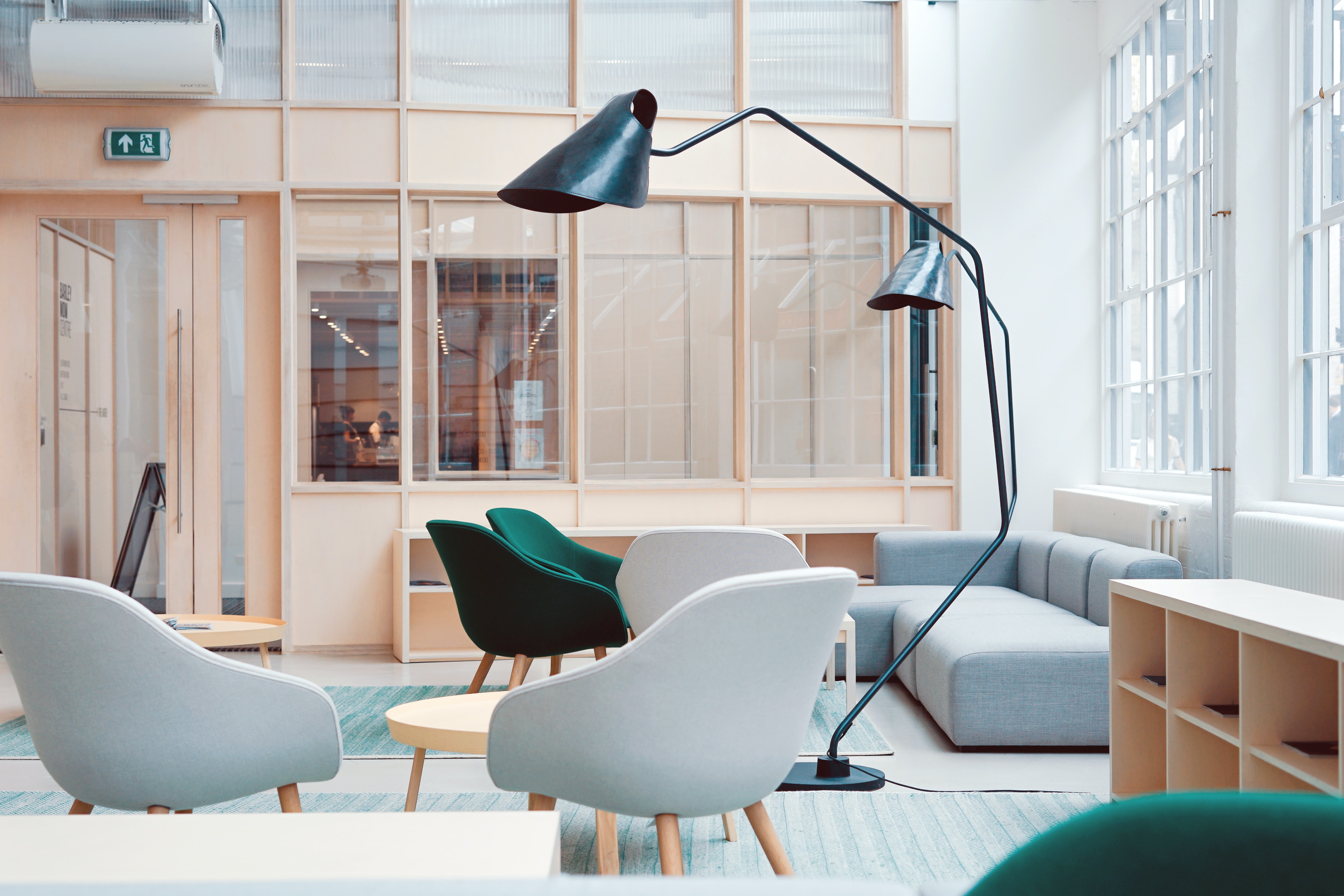Prime
Trends in office spaces

Natural lighting, ergonomic furniture are the trend. PHOTO | COURTESY
What you need to know:
- Due to evolution of work culture and the extraordinary challenges posed by events such as the coronavirus pandemic, today’s office spaces are far from the traditional and cubicle-laden settings of the past.
In the modern professional landscape, the office design is pivotal in shaping not only the physical work environment but also the experiences of those who inhabit them.
Whereas the significance of office design has grown exponentially in recent years, influenced by both the natural evolution of work culture and the extraordinary challenges posed by events such as the coronavirus pandemic, today’s office spaces are far from the traditional and cubicle-laden settings of the past.
George William Ntanzi, a civil engineer, says the modern office is dynamic, adaptable, and thoughtfully curated to enhance productivity, employee well-being, collaboration and support way we work.
Current office design trends include; co-working spaces, virtual, private, open, hybrid, remote/home, shared, executive, and so on.
Remote work integration
This refers to a work arrangement in which employees do not need to be physically present in a centralised office to perform their job duties. Remote workers have the flexibility of working from other locations such as their homes.
With the outbreak of Covid-19 and advancements in technology, such as high speed internet, cloud computing that employers enabled their staff to access their work and complete tasks from virtually anywhere.
Technology integration
With the increase in reliance on digital tools and interconnected systems in today’s workplace, office spaces have evolved to not only accommodate technology but also leverage its capabilities for improved efficiency, connectivity, and overall productivity.
Joseph Mwanje, an administrator at Tech Crunch Liability Limited Company, says, “This technology integration reflects a commitment to adapting to evolving work needs, ensuring that employees can collaborate seamlessly, regardless of their location, and helps support businesses stay agile and innovative.”
He notes that there is a growing trend of office spaces incorporating a smart form of IoT (Internet of Things). This is where using smart office solutions/ devices are helping to ease effort and improve work efficiency. The smart solutions include smart lighting, climate control and occupancy sensors that adjust settings based on real-time data.
Inclusively, post Covid-19 innovation has led to more and more development and use of touchless technology like automatic doors, touchless faucets and voice-activated controls to minimise contact with high-touch surfaces for hygiene and convenience.
Other technology integrations include digital signage for employee monitoring and analysis, high-speed Wi-Fi, 3D printing, biometric access control and customised applications that further enhance the workplace experience.
Hybrid workspaces
Due to the need for different organisations to foster a culture of collaboration and effective communication, a shift to hybrid workspaces has become inevitable.
This is because such spaces combine elements of private and shared offices where individuals from various organisations work in a communal setting to reflect the changing nature of work in our digital and interconnected world.
“This adaptation acknowledges the importance of flexibility and aims to create spaces that enhance productivity and collaboration for a diverse and dispersed workforce, reflecting the changing demands of the modern workplace,” says Mwanje.
Biophilic design
Incorporating nature into office spaces has emerged as a significant trend in contemporary office spaces, centred on the idea that humans possess a natural affinity for nature which is good for them.
The design integrates elements of nature by including the use of natural materials such as bamboo, stone, waterfalls, fish tanks, outdoor spaces, green roofs and indoor plants in an office space.
According to www.parcelpending.com, Rao Kovvali, a sustainability data manager, explains that adding plants to an office space is key in helping to create a break from stressful work because plants tend to have a calming effect on the mind of a worker as they foster a more refreshing and creatively stimulating atmosphere.
Open layouts with privacy
The concept of open layouts with privacy in modern office design seeks to delicately balance collaboration and privacy in work spaces. Open-plan offices promote interaction and creativity but also acknowledge the need for individual concentration. This approach includes open-plan layouts, collaborative spaces, private workstations, semi-private areas, privacy pods, and flexible furniture.
Ntanzi says this design approach acknowledges the multifaceted nature of modern work, which fosters a dynamic and adaptable office that enhances both productivity and job satisfaction.
Sustainability design
Sustainable design practices have become an integral part of the modern office spaces, reflecting a commitment to reducing the negative environmental impact of a workplace. Features such as energy-efficient lighting, recycling stations and the use of recycled and eco-friendly materials are being integrated.
“Sustainable office design does not only align with corporate social responsibility but also contributes to cost savings and a healthier indoor environment, all of which are vital considerations in modern office spaces,” Ntanzi says.
Diversity and inclusion
In a bid to showcase a company’s values and cultures, while creating a flexible yet comfortable workplace, organisations have come to an understanding that their employees need time to rewind and recharge after a busy schedule at work. Modern office spaces are thus being built with creative inclusive spaces that cater to diverse needs and work styles of employees.
This is being done through including quiet areas, sensory rooms, and rooms for board and pub games such as chess, scramble and darts. While the games not only promote social interaction they also create a relaxation and inclusive atmosphere for workers.
Wellness-centric design
Whereas employee well-being takes centre stage for effective production, this wellness-centric design involves inclusion of wellness features such as natural lighting, ergonomic furniture and fitness areas to improve the overall health and productivity of employees.
Additionally, buildings with modern office spaces are being constructed in a way that improves indoor air quality, upgraded temperature regulation, and overall occupant well-being.
Ntanzi says: “Engineers design ductwork and airflow patterns to evenly distribute conditioned air, select energy-efficient HVAC system (Heating, Ventilation, and Air Conditioning) equipment, that ensure uniform temperature levels throughout the building, integrate air filtration and purification systems to remove indoor contaminants.”




